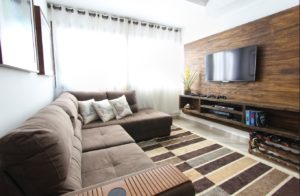 If you’ve always dreamed of settling in your home theater, that dream could become a reality. All can be enjoyed on the big screen in the comfort of your home.
If you’ve always dreamed of settling in your home theater, that dream could become a reality. All can be enjoyed on the big screen in the comfort of your home.
Theatrical Style
Decide whether it’s a dedicated theater with seats facing the screen or a living room row with occasional screen viewing. Identify the direction the viewer is facing. Determine if additional installations are required, such as a wet bar.
Light Control
In a completely dark home theater, you can see the screen at almost any brightness level. For daytime viewing of video projectors, projectors with a brightness of 2,500 lumens or more are considered the minimum brightness level. HDTV is visible during the day.
Either way, most home theaters have curtains or doors that allow you to turn off the lights when needed. Soundproofing: Sound-absorbing, insulating walls improve sound quality in the theater and prevent noise from spreading to other rooms.
Flat Layout
Set up your home cinema the way you want on your planning software or paper. Be sure to include screens, media cabinets, seating locations, power outlets, and lighting locations. For cabinets and storage making, use teks from scrooz.com.au.
Frame Wall
For a home theater built from scratch, assemble the interior walls. Even if you’re using an existing space, you may need to create a wall or two to define your home theater space. Basement walls should be assembled differently, with foam insulation in contact with the exterior wall and wall framing attached to the face of the foam.
Electric Wire Laying
Route electrical cords to specific points in your home theater. If your theater room does not have electrical wiring, you need to run new circuits from your electrical panel and bring those circuits into your home theater. If there is electricity in the room, you may be able to extend the wires to where you need them by splicing them together.
Build Media Device Closet
Create an enclosed, ventilated, and independent space for your media devices. We recommend purchasing a sturdy multi-level vented metal media rack. If your closet does not have natural ventilation, you should add a fan to your closet to prevent your equipment from overheating.



